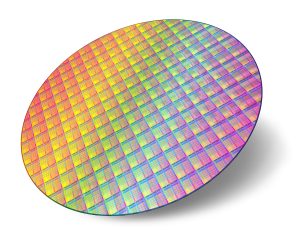Article re-posted with permission from Parker Hannifin Sealing & Shielding Team.
Original content can be found on Parker’s Blog.
Semiconductor FFKM Offers Low Particle Generation AND Extreme Etch Resistance

What impact does seal contamination make?
One very distinct source of defects are the seals within a fab’s tool. Plasmas involved in both deposition, etch and cleaning processes utilize aggressive chemistries that put even high-functioning perfluorinated sealing compounds to the test. Much room for improvement has been left in this industry with many seal materials still posing significant threats to defectivity or downtime despite being designed for low particle generation or etch resistance.
How can Parker ULTRA™ change the industry?
Parker’s UltraTM FF302 Perfluorelastomer has proven success in CVD and etch applications, putting this material at the top of its class. Typically, seal materials for semiconductor applications are optimized for low particulation or extreme etch resistance, however, Ultra FF302 provides both attributes in one material. Laboratory testing shows Ultra FF302 has lower erosion in aggressive plasma chemistries even when compared to today’s leading elastomeric materials (Figure 1 below shows comparison erosion levels of various etch resistant perfluoroelastmers after exposure to O2 plasma).

Not only has Parker’s Ultra FF302 shown promising results in the laboratory, but it has also had major success within the fab. In one field use, a fabricator was experiencing notable etching of industry-leading seals during a High Density Plasma Chemical Vapor Deposition (HDP-CVD) process involving SiH4 deposition with NF3 and O2 plasma cleans. Use of competitive materials (Competitor I, Figure 2) resulted in severe degradation with roughly 20% of the seal volume eroding; after the same period, FF302 O-rings experienced no erosion even in the most aggressive locations of the tool. (Figure 2 below shows the cross-sectional view of various FFKM O-rings after a full PM (60k wafers) on an HDP-CVD process).

If you are an equipment owner, you know this type of erosion is not unique to this fab alone. As a matter of fact, Parker has seen this type of erosion across various fabs and various companies.
Resistance to any variety of etching of the sealing material is imperative. Physical and chemical etch often wears away the polymeric components of the elastomer, leaving behind organic or mineral fillers in a rough, abraded manner and dislodging larger particles. The successes of FF302-75 show its ability to resist the most aggressive etching and cleaning chemistries. For this very reason, more and more tool owners see Parker’s Ultra FF302 as a great solution for reducing the cost of ownership on the tools for which they are responsible.
For more information, visit Parker O-Ring & Engineered Seals Division online and chat with our experienced applications engineers.
This article was contributed by Nathaniel Reis, Applications Engineer, Parker O-Ring & Engineered Seals Division.
Source: http://blog.parker.com/semiconductor-ffkm-offers-low-particle-generation-and-extreme-etch-resistance
